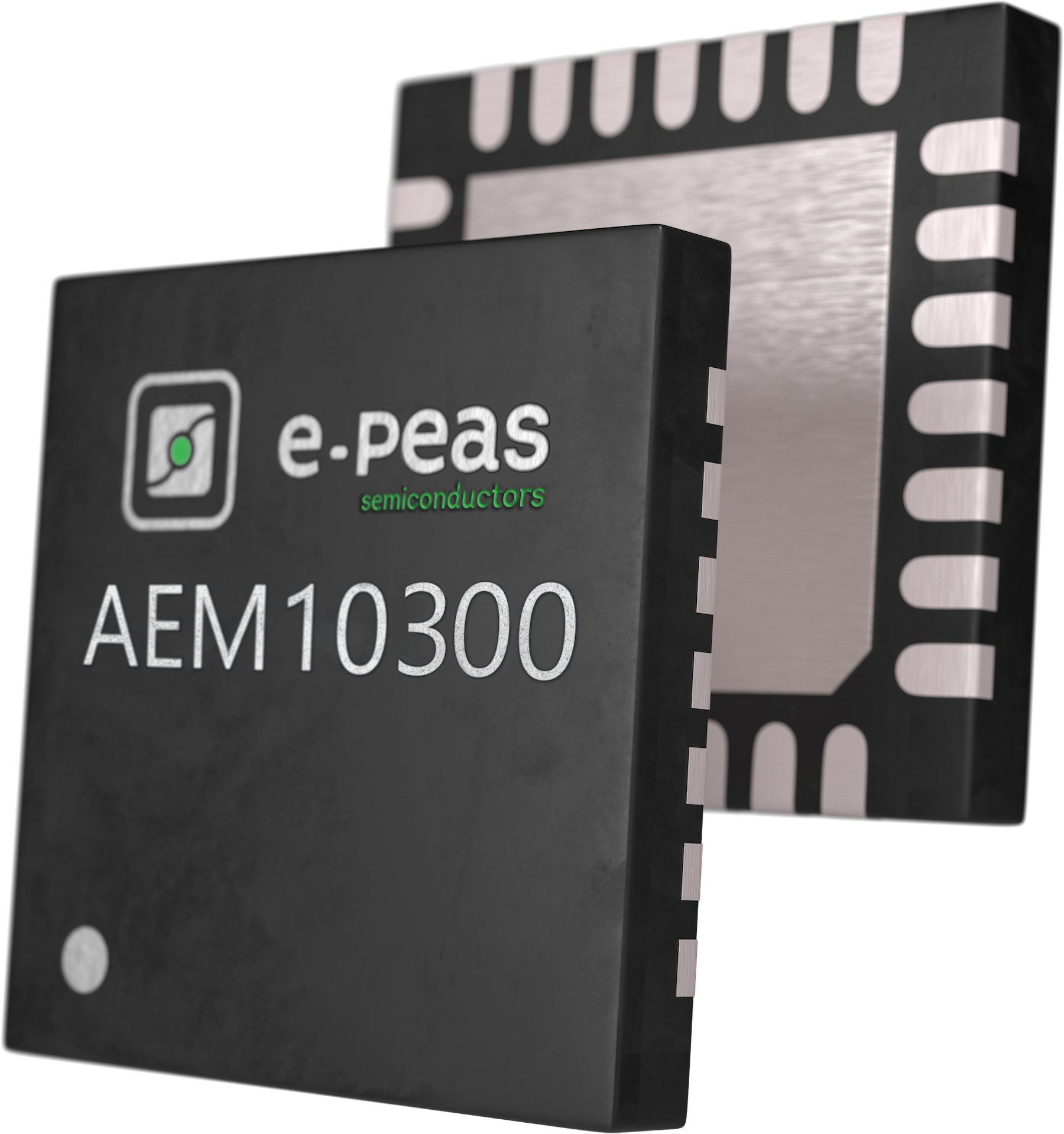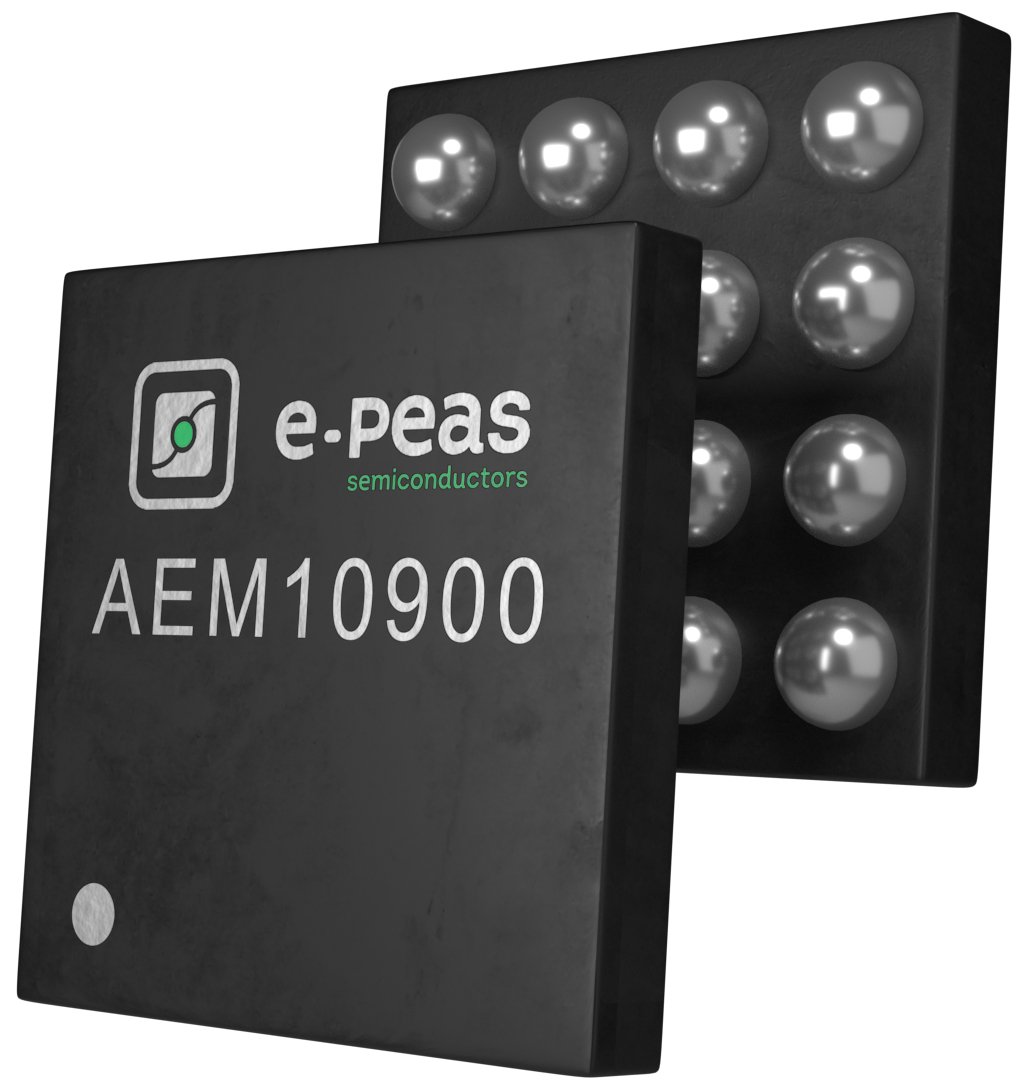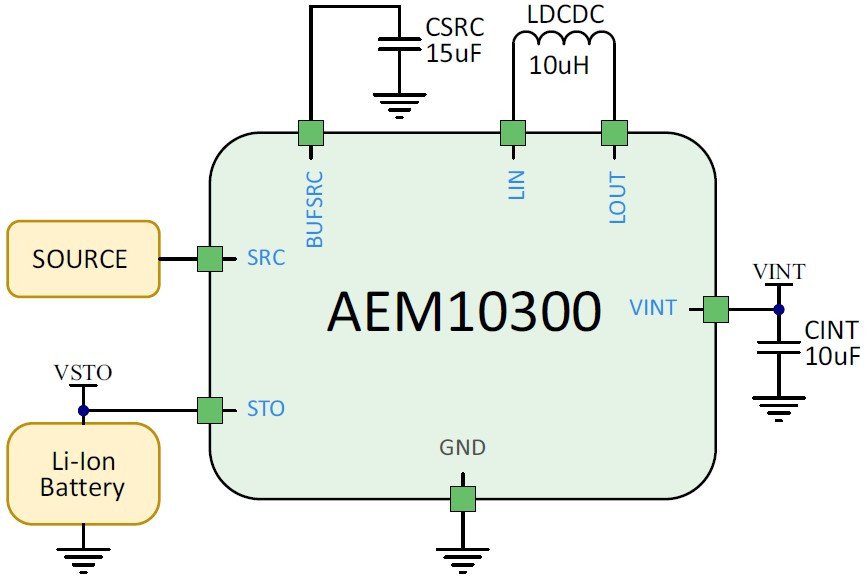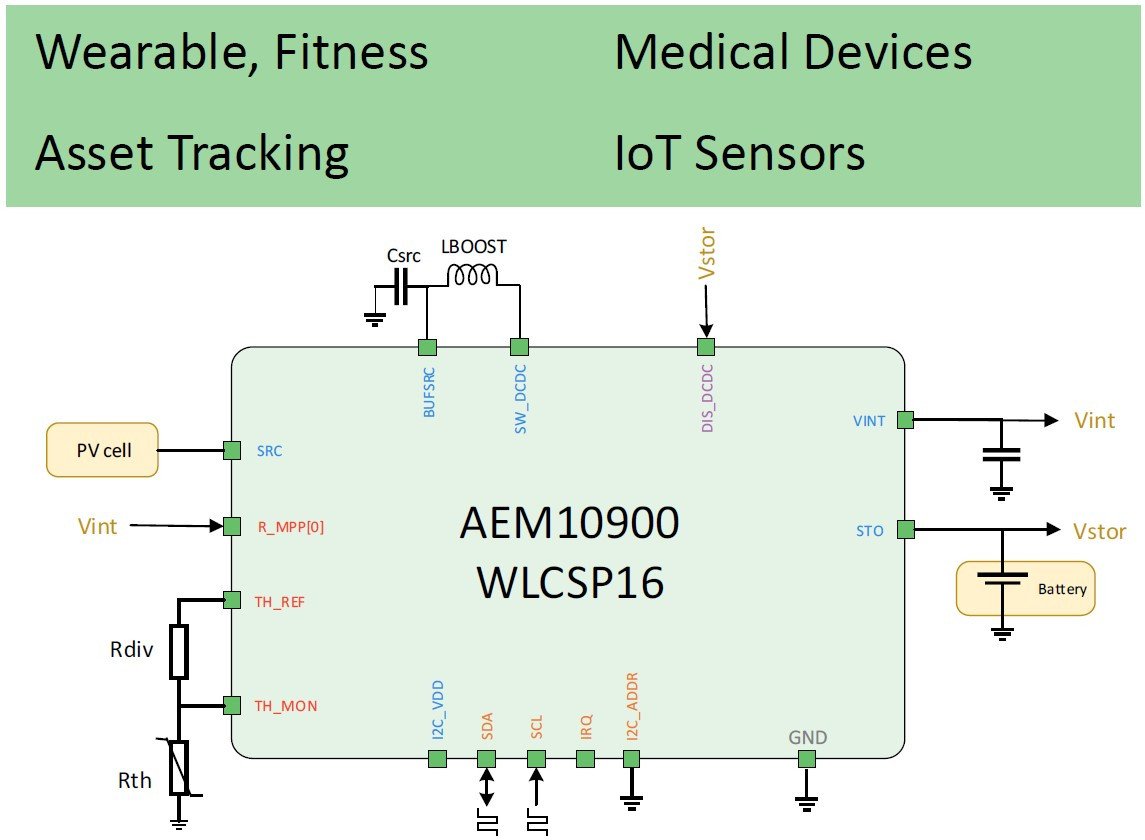e-peas – New IC Generation of Energy Harvesting IoT Products
![]() e-peas presents a new product family of battery charger ICs, which cover the need for optimized power management solutions for energy harvesting hardware.
e-peas presents a new product family of battery charger ICs, which cover the need for optimized power management solutions for energy harvesting hardware.
Whilst e-peas’ existing power management ICs (PMICs) enable the direct current output to the application and the charging of energy storage elements (such as Li-Ion batteries or supercapacitors), the AEM10900, AEM10300 and AEM30300 (Vibration and RF) series are fully dedicated to the charging function.
Thanks to this, the ICs can be used in situations that require a simple implementation as well as space and ![]() cost limits.
cost limits.
The PMICs are capable of extracting a quiescent current of zero from the battery. This means that the energy stored in the battery is not wasted for supplying the PMICs if the energy harvesting is interrupted for a longer period of time.
Both the AEM10300 and AEM30300 PMICs feature integrated ultra-low power DC/DC converters that support operation over an input  voltage range of 100mV to 4.5V. Adaptive power management allows these IC’s to automatically switch between boost, buck-boost and buck operating configurations as needed. This ensures that optimal power transfer is always maintained between the respective inputs and the storage element.
voltage range of 100mV to 4.5V. Adaptive power management allows these IC’s to automatically switch between boost, buck-boost and buck operating configurations as needed. This ensures that optimal power transfer is always maintained between the respective inputs and the storage element.
The AEM10900 highly integrated PMIC boost converter is optimized for solar-based energy harvesting implementations in conjunction with a single-cell photovoltaic panel. With its super-fast power point tracking (MPPT) functionality set specifically for objects  in motion, this device can ensure that it harvests the most energy from available ambient lighting – so that as much as possible can be stored. In addition, the IC has a cold start capability of 250mV and 5 μW input power (typical), meaning the IC can begin charging the battery even at very low light intensities.
in motion, this device can ensure that it harvests the most energy from available ambient lighting – so that as much as possible can be stored. In addition, the IC has a cold start capability of 250mV and 5 μW input power (typical), meaning the IC can begin charging the battery even at very low light intensities.
AEM10900 introduces an I²C interface to minimize the number of pins and provide a larger number of possible configurations. It offers a number of features, such as battery thermal protection, a Joule counter that informs the user of the amount of energy gained, and a dispatch mode in which the battery cannot be charged. Main applications of this PMIC are portable consumer products and body-worn medical monitoring devices.
These new battery charger PMICs need an extremely low number of external components. This means that energy harvesting functionality can be added while the material costs stay low and only very little space on the circuit board is needed.


